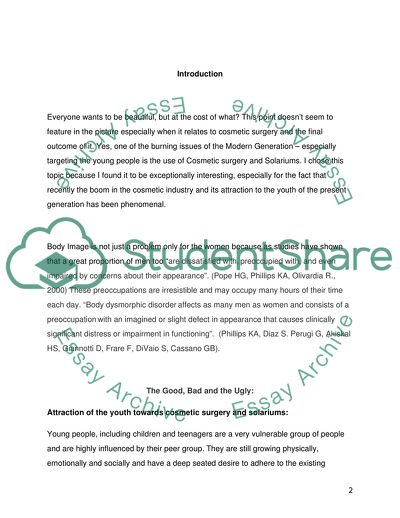Cite this document
(The Picture of Cosmetic Surgery Term Paper Example | Topics and Well Written Essays - 4500 words, n.d.)
The Picture of Cosmetic Surgery Term Paper Example | Topics and Well Written Essays - 4500 words. https://studentshare.org/health-sciences-medicine/1711422-the-use-of-cosmetic-surgery-and-solariums-by-young-people
The Picture of Cosmetic Surgery Term Paper Example | Topics and Well Written Essays - 4500 words. https://studentshare.org/health-sciences-medicine/1711422-the-use-of-cosmetic-surgery-and-solariums-by-young-people
(The Picture of Cosmetic Surgery Term Paper Example | Topics and Well Written Essays - 4500 Words)
The Picture of Cosmetic Surgery Term Paper Example | Topics and Well Written Essays - 4500 Words. https://studentshare.org/health-sciences-medicine/1711422-the-use-of-cosmetic-surgery-and-solariums-by-young-people.
The Picture of Cosmetic Surgery Term Paper Example | Topics and Well Written Essays - 4500 Words. https://studentshare.org/health-sciences-medicine/1711422-the-use-of-cosmetic-surgery-and-solariums-by-young-people.
“The Picture of Cosmetic Surgery Term Paper Example | Topics and Well Written Essays - 4500 Words”. https://studentshare.org/health-sciences-medicine/1711422-the-use-of-cosmetic-surgery-and-solariums-by-young-people.


